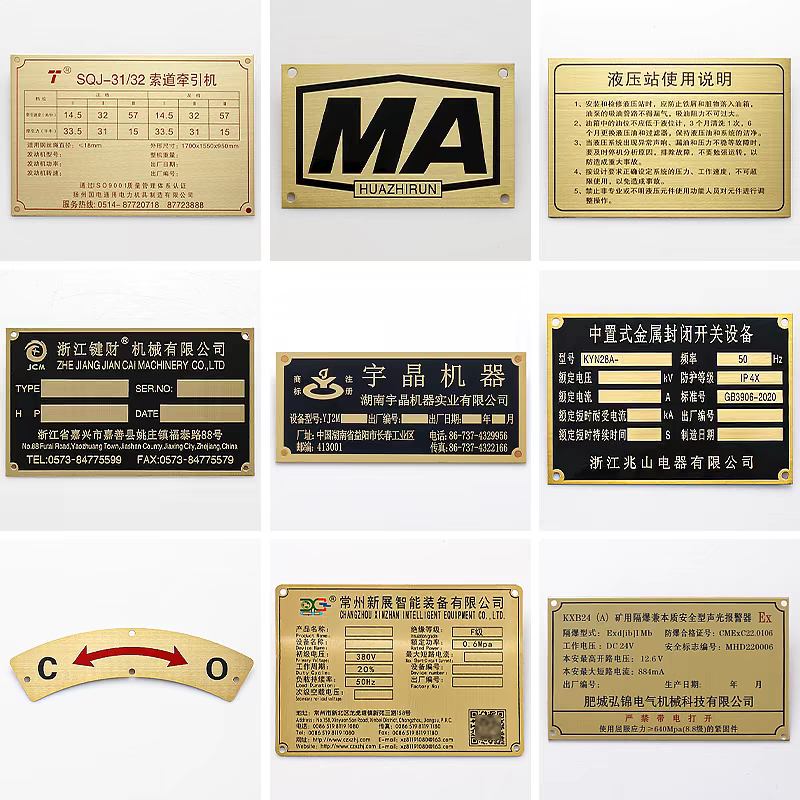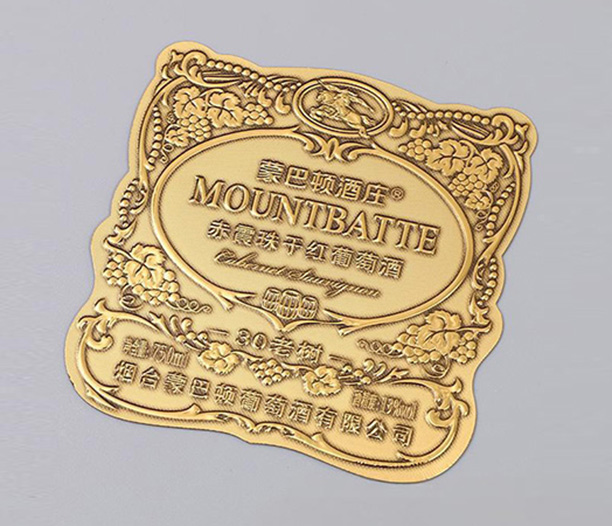Understanding fire extinguisher tag requirements isn't just about paperwork – it's a fundamental aspect of fire safety that can mean the difference between life and death in an emergency. Those small tags hanging from your extinguishers are far more than slips of paper; they are a vital tracking system, a documented history, and your primary assurance that your fire safety equipment is operational and ready when seconds count. Meeting fire extinguisher tag requirements is non-negotiable for legal compliance and, more importantly, for protecting lives and property.
This comprehensive guide dives deep into everything you need to know about fire extinguisher tag requirements, covering regulations from OSHA and NFPA to UK-specific standards, inspection protocols, documentation essentials, and best practices for seamless compliance.

Why Fire Extinguisher Tag Requirements Matter: Your First Line of Defense
Fire extinguisher tags serve as the cornerstone of your fire safety equipment management. Think of them as a detailed report card for each unit:
Tracking Maintenance History: Tags provide an immediate visual record of inspections and servicing.
Ensuring Readiness: They confirm the extinguisher has been checked and is deemed operational.
Regulatory Compliance: Proper tagging is mandated by fire safety regulations globally (OSHA, NFPA, RRFSO in the UK).
Accountability: Tags identify who performed the last inspection or service and when.
Quick Status Assessment: Color-coding or clear labeling allows for instant identification of an extinguisher's compliance status during routine checks or emergencies.
Ignoring fire extinguisher tag requirements leaves you vulnerable to equipment failure during a fire, potential legal liabilities, fines, and invalidated insurance.
Decoding the Fire Extinguisher Tag: Essential Components
A compliant fire extinguisher tag isn't random; it contains specific, crucial information dictated by fire extinguisher tag requirements:
Date of Last Inspection/Service: Clearly indicating when the check or maintenance occurred.
Inspector/Servicer Identification: Initials, signature, or company name of the qualified individual who performed the work.
Extinguisher Identification: Serial number or unique asset ID linking the tag to the specific unit.
Type of Service: Distinguishing between a monthly inspection, annual maintenance, recharge, or hydrostatic test.
Findings/Condition Notes: Any observations about the extinguisher's condition (e.g., "pressure good," "needs recharge," "hose damaged").
Next Service Due Date: A critical field showing when the next inspection or maintenance is required.
Compliance Indicators: Often includes color-coding or specific labels (e.g., "Annual Service Complete," "Condemned").
Understanding the Types of Tags: Monthly, Annual, and Maintenance
Fire extinguisher tag requirements specify different tags for different levels of service:
Monthly Inspection Tags: Document quick visual checks performed internally.
Purpose: Verify basic readiness – location, access, visible damage, pressure gauge in green, pin and seal intact.
Tag Requirements: Date, inspector initials, brief condition notes, indication of "Pass" or any issues found. These tags are often simpler.
Annual Maintenance Tags: Document thorough servicing by a certified professional.
Purpose: Comprehensive internal and external examination, maintenance, and necessary repairs or recharging.
Tag Requirements: Detailed service date, servicing company info, technician certification number, type of service performed, weight check results (if applicable), next service due date. These tags are more detailed.
Maintenance/Service Tags: Used specifically after recharging, hydrostatic testing, or significant repairs.
Purpose: To record work beyond the standard annual inspection.
Tag Requirements: Date, service company, technician ID, specific work performed (e.g., "Recharged - 5lb ABC," "Hydro Tested"), next service due date.

Fire Extinguisher Tag Requirements: OSHA Regulations (USA)
The Occupational Safety and Health Administration (OSHA) sets mandatory fire extinguisher tag requirements under standard 29 CFR 1910.157(e) and (f):
Mandatory Inspections: Extinguishers must be visually inspected monthly.
Annual Maintenance: Must be performed by a certified professional within the last 12 months.
Record Keeping: Employers must maintain records of the annual maintenance date and the person performing it. While OSHA doesn't mandate a specific tag format, tags are the universally accepted method to visibly demonstrate compliance with these record-keeping requirements.
Information on Tags: Tags must effectively communicate the month/year of the last annual check or hydro test, and the identity of the servicing company/person. OSHA inspectors look for this visible proof of compliance.
Accessibility: Tags must be legible and intact.
Fire Extinguisher Tag Requirements: NFPA 10 Standard (USA & Influential Globally)
The National Fire Protection Association's NFPA 10: Standard for Portable Fire Extinguishers provides the most detailed and widely followed fire extinguisher tag requirements, often exceeding OSHA and forming the basis for many local regulations:
Explicit Tag Mandate: NFPA 10 requires that extinguishers have a tag or label securely attached (Para. 7.2.1.1).
Tag Content Requirements (Para. 7.2.1.2): Tags must include:
Month and year of inspection (expressed as a 4-digit year) by a representative of the owner.
Month and year of the last annual maintenance.
Identification of the person/company performing the annual maintenance.
Hydrostatic test date (when applicable).
Color Coding (Annex C - Recommended): While not strictly mandated in the body of NFPA 10, Annex C strongly recommends a color-coding system for quick visual identification:
Monthly Inspection Tags: Often white or no specific color.
Annual Maintenance Tags: Highly recommended to be a specific color (frequently blue) changed each year. This makes identifying units that haven't been serviced within the last 12 months extremely easy.
Inspection Intervals: NFPA 10 strictly defines:
Monthly: Visual inspection by owner's representative.
Annual: Thorough inspection and maintenance by a certified professional.
Internal Examination: Typically every 5 or 6 years (depending on extinguisher type) during maintenance.
Hydrostatic Testing: At 5, 6, or 12-year intervals depending on the extinguisher type and shell material.
Fire Extinguisher Tag Requirements: UK Regulations (BS 5306-3:2017 & RRFSO)
In the UK, fire extinguisher tag requirements are governed primarily by:
The Regulatory Reform (Fire Safety) Order 2005 (RRFSO): Places the duty on the "Responsible Person" (building owner, employer, occupier) to ensure fire safety equipment, including extinguishers, is properly "maintained in good working order" and subject to "suitable maintenance." Proper tagging is essential evidence of this maintenance.
British Standard BS 5306-3:2017 (Fire extinguishing installations and equipment on premises. Commissioning and maintenance of portable fire extinguishers. Code of practice): This is the detailed code specifying how to comply with the RRFSO regarding extinguishers. Its fire extinguisher tag requirements include:
Mandatory Tagging: Extinguishers must have a service label/tag securely attached (Clause 6.2).
Tag Content (Clause 6.2): The tag must include:
Date of service (expressed as month/year).
Unique identifier for the extinguisher (e.g., serial number, asset number).
Name or identifier of the competent service technician/company.
Next service due date.
Type of service carried out (e.g., basic, extended, recharge).
Tamper Evident Seals (Clause 6.3): Crucially, BS 5306-3 mandates the use of a tamper evident seal fitted to the safety pin after any service or inspection. This seal provides immediate visual evidence if the extinguisher has been used or tampered with since its last service. A broken or missing seal triggers the need for immediate inspection/replacement.
Record Keeping (Clause 6.4): Detailed service reports must be provided to the responsible person and retained for the life of the extinguisher. The tag is the on-device summary; the report is the full history.
Inspection Intervals:
Monthly: Visual inspection by the responsible person to ensure location, access, no obvious damage, pressure OK, and tamper evident seal is intact.
Annual (Basic Service): By a competent technician - includes full external check, safety pin/seal replacement, pressure/weight check, basic internal examination for some types.
Extended Service (Typically 5 Years): More thorough internal examination and recharge.
Overhaul/Re-testing: At intervals specified by manufacturer or BS EN 3 (the product standard for extinguishers), often involving hydrostatic testing.
Meeting Monthly Fire Extinguisher Tag Requirements
Monthly inspections are the frontline defense in ensuring extinguisher readiness. Meeting fire extinguisher tag requirements for monthly checks involves:
The Inspection: A trained person (often internal staff) visually checks:
Location: Is it in its designated spot?
Access: Is it unobstructed? (No boxes, furniture blocking it).
Physical Condition: No visible damage, corrosion, dents, or leaks.
Pressure Gauge: Needle is in the green zone.
Tamper Seal & Pin: Intact and in place.
Hose/Nozzle: No blockages or damage.
Label: Legible operating instructions.
Tag Documentation: The monthly tag must be updated with:
Date of inspection.
Initials or name of the inspector.
Brief condition note (e.g., "OK," "Gauge low," "Seal broken").
Who Can Do It: Does not require formal certification, but the person must be adequately trained on what to look for and how to document findings correctly.
Common Compliance Issues: Skipped inspections, incomplete documentation, failing to note minor issues, not replacing damaged/missing tags.
Meeting Annual & Maintenance Fire Extinguisher Tag Requirements
Annual maintenance and other servicing are more complex, demanding stricter fire extinguisher tag requirements:
The Service: Performed by a competent person (formally trained and certified). Involves:
Thorough external examination.
Weight or pressure verification.
Discharge hose/nozzle inspection.
Internal examination (depending on service type - basic, extended, recharge).
Recharging if necessary.
Replacement of the tamper seal and pin.
Hydrostatic testing when due.
Certified Professionals Only: Annual and extended services must be performed by individuals certified to BS 5306-3 standards (UK) or equivalent (e.g., NFPA certified in the US).
Detailed Tag Documentation: The tag applied after service must clearly show:
Service Date (Month/Year).
Servicing Company Name/Logo.
Technician ID/Certification Number (often traceable via the company).
Type of Service Performed (e.g., "Annual Service," "Extended Service," "Recharge").
Next Service Due Date (Critical!).
Extinguisher ID (Serial/Asset Number).
In the UK, application of a new tamper evident seal is integral to the service and tag compliance.
Timeline is Critical: Annual service must be performed within 12 months of the previous annual service. Extended services and hydro tests have fixed intervals based on extinguisher type. Tags must accurately reflect these dates.
The Critical Role of Tamper Evident Seals in Tag Compliance
Tamper evident seals are a non-negotiable component of UK fire extinguisher tag requirements (BS 5306-3) and are strongly recommended best practice globally (NFPA 10 Annex C). They work by:
Providing Immediate Visual Evidence: A broken or missing seal is a clear sign the extinguisher may have been used, partially discharged, or tampered with since its last service.
Triggering Action: A broken seal mandates that the extinguisher be immediately removed from service and inspected/recharged by a professional before being put back. It cannot be ignored.
Enhancing Security: Especially vital in high-traffic or high-risk areas to prevent vandalism or unauthorized use.
Supporting Monthly Inspections: The monthly visual check explicitly includes verifying the seal is intact. This is impossible without a seal in place.
Best Practices for Managing Fire Extinguisher Tag Requirements
Staying compliant requires proactive management:
Robust Record Keeping: Maintain both the physical tags and detailed service reports. Consider digital systems for tracking schedules, sending reminders, and storing historical data, but never replace physical tags.
Clear Inspection Schedules: Establish and strictly follow a calendar for monthly inspections and schedule annual services well in advance. Coordinate with your service provider.
Thorough Staff Training: Ensure personnel performing monthly checks understand what to inspect, how to document it on the tag, and the critical importance of the tamper seal. They should also know how to report issues found.
Visual Management: Utilize color-coded tags (especially following NFPA 10 Annex C recommendations) for instant status recognition (e.g., blue for current annual service). Ensure tags are durable and securely attached.
Partner with Reputable Providers: Use certified, competent service companies who understand and strictly adhere to fire extinguisher tag requirements (OSHA, NFPA 10, BS 5306-3) and provide clear, compliant documentation and seals.
Environmental Considerations: For extinguishers located outdoors or in harsh environments, ensure tags and seals are made from durable, weather-resistant materials that remain legible. Check these more frequently.
Regular Review: Periodically audit your extinguishers and their tags to ensure ongoing compliance and address any issues proactively.
Meeting fire extinguisher tag requirements is far more than a bureaucratic exercise. It is the systematic, documented proof that your life-saving fire extinguishers are operational and ready. From the monthly visual check documented on a simple tag to the detailed annual service record and the crucial tamper evident seal, each element plays a vital role in ensuring equipment reliability and regulatory compliance. Understanding and diligently implementing these requirements – whether driven by OSHA, NFPA 10, or BS 5306-3 – protects your people, your property, and your business from the devastating consequences of fire and non-compliance. Invest in proper tagging, sealing, and maintenance; it's an investment in safety you cannot afford to neglect.





